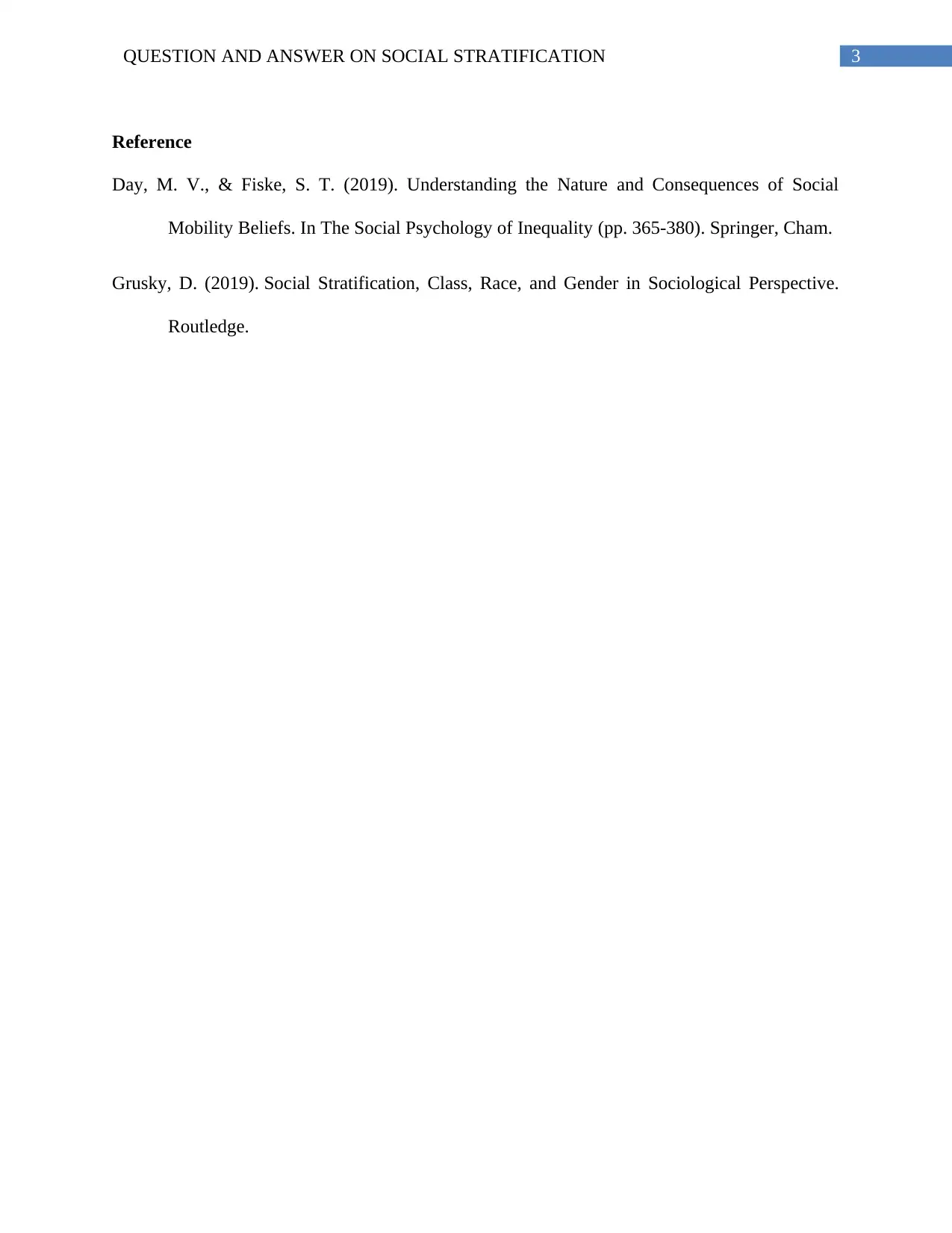Social Stratification: In-depth Questions and Answers Analysis
VerifiedAdded on 2022/08/20
|4
|686
|22
Homework Assignment
AI Summary
This assignment provides a detailed question-and-answer analysis of social stratification. It explores the concept of the American Dream, examining how it relates to social and economic mobility. The assignment analyzes family data to understand patterns of upward and downward mobility across generations, highlighting the impacts of social class and the implications of mobility trends. It delves into the influence of race and ethnicity on mobility, and discusses the historical construction of race by Linnaeus and its implications for societal views and inequalities. Furthermore, the assignment examines the role of societal influences on individual self-perception and the formation of racial constructs. Finally, the assignment uses references like Day & Fiske (2019) and Grusky (2019) to support the arguments.
1 out of 4





![[object Object]](/_next/static/media/star-bottom.7253800d.svg)